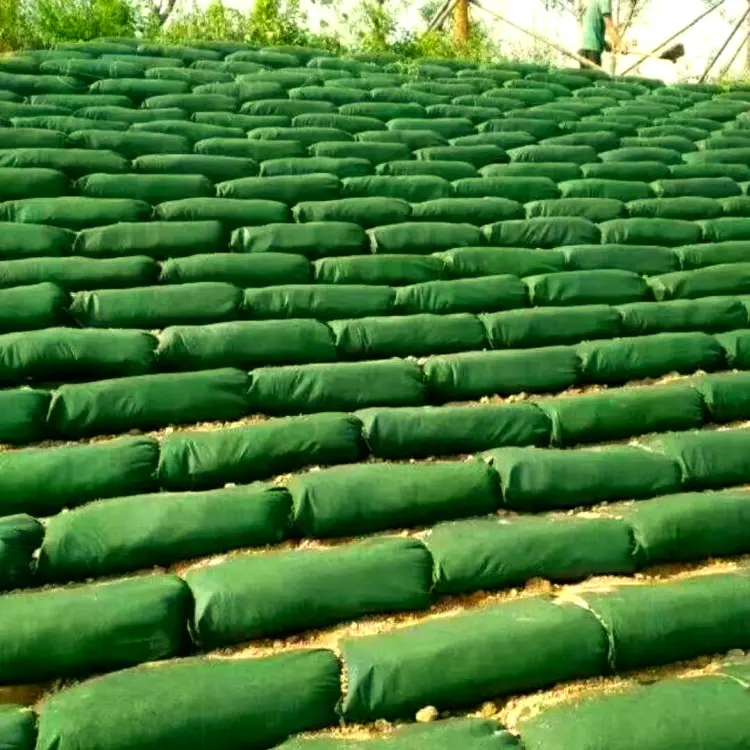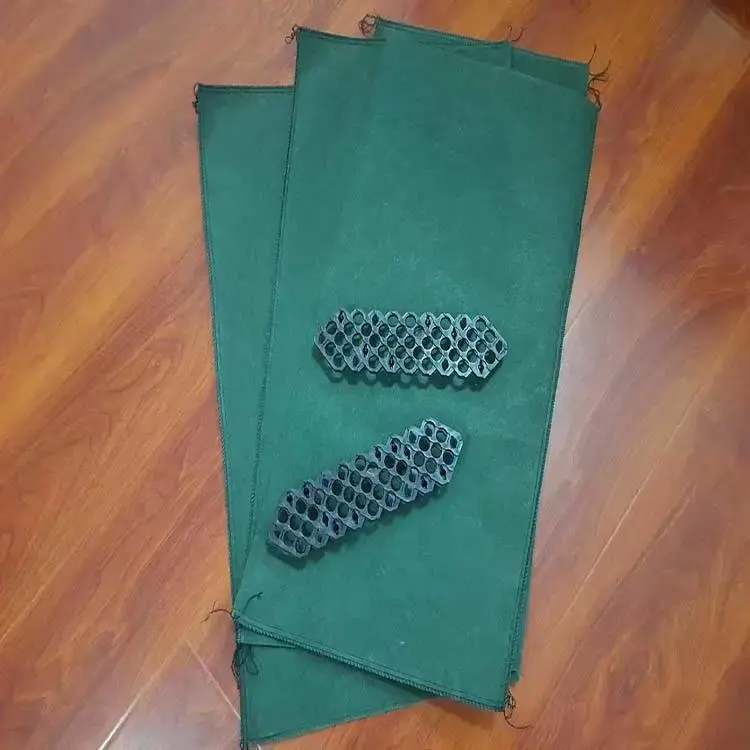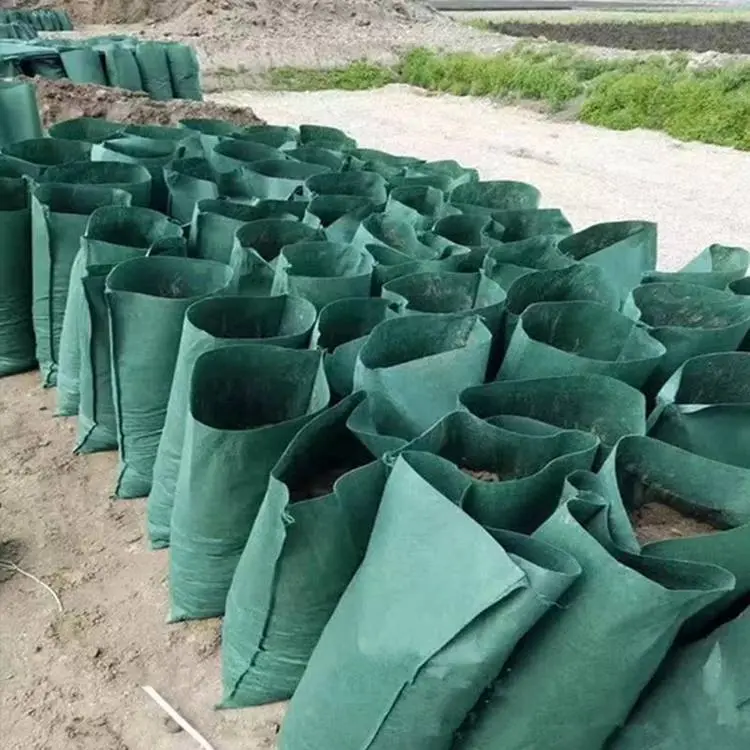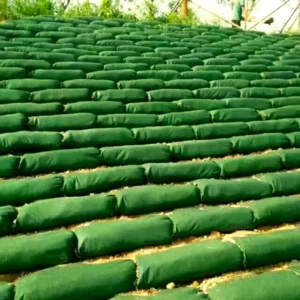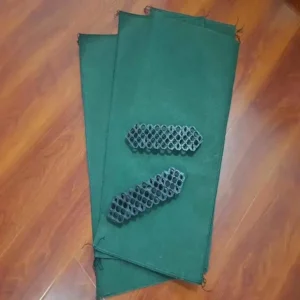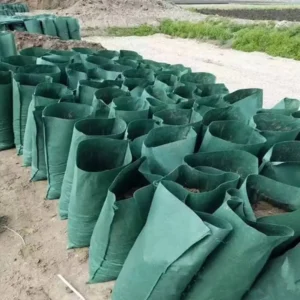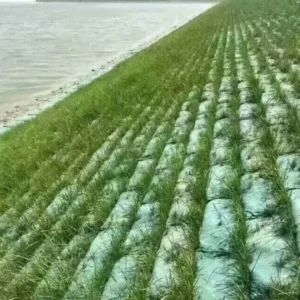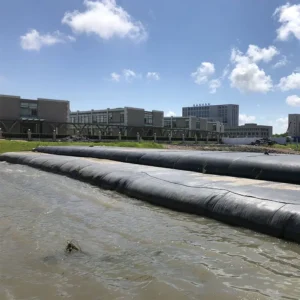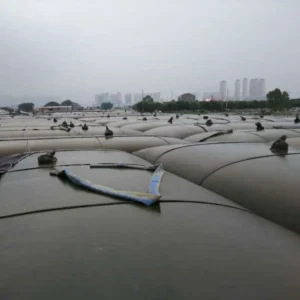Vegetated retaining walls integrate high-strength geogrids with plantable soil-filled units (e.g., ECO-Bags, modular blocks) to create stable, eco-friendly slopes. Key features:
- Material: UV-resistant polypropylene/polyester geotextiles (150–500 gsm)
- Design Load: 10–50 kN/m² (customizable per project)
- Vegetation Compatibility: Supports grasses, shrubs, and deep-rooted plants
- Permeability: 50–200 l/m²/s (prevents hydrostatic pressure buildup)
Applications
- Riverbank Protection
- Reduces erosion by 70% vs. concrete walls (EPA data)
- Case: Colorado River Restoration, USA – Used 8,000+ vegetated ECO-Bags to stabilize 2.5 km of eroded banks, achieving 95% plant coverage within 12 months.
- Highway Slope Stabilization
- Complies with AASHTO M288 standards
- Case: Alpine Highway, Switzerland – Deployed modular vegetated blocks to prevent rockfalls; reduced maintenance costs by 40%.
- Urban Green Infrastructure
- Stormwater management (meets ISO 14001 sustainability criteria)
- Case: Singapore’s ABC Waters Program – Combined vegetated walls with bioswales to cut runoff by 60%.
Technical Advantages
✔ Erosion Control: Root systems enhance soil cohesion (shear strength +15–30%)
✔ Aesthetic Value: Natural appearance vs. gray infrastructure
✔ Cost-Efficiency: 20–30% lower lifecycle cost than concrete alternatives
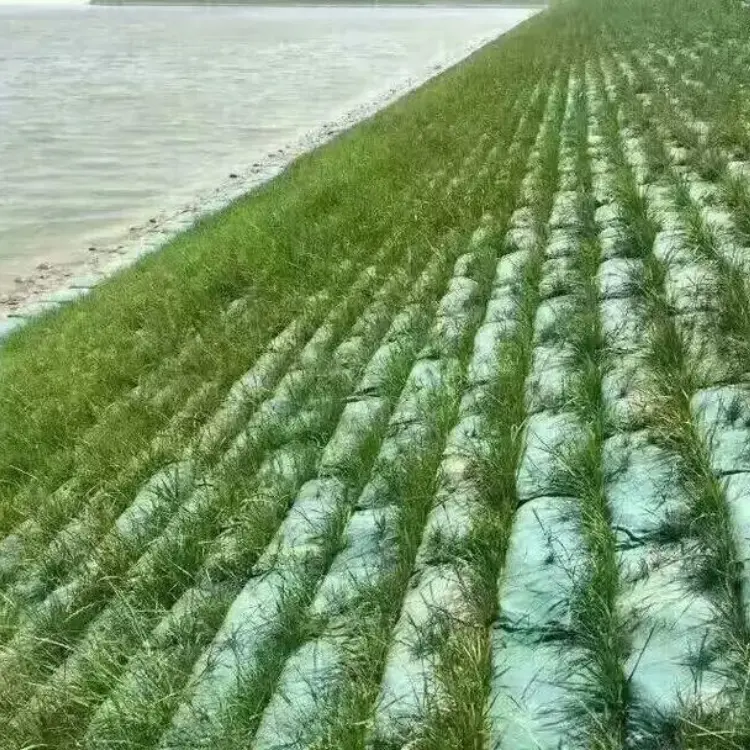
Installation Guidelines
- Base preparation (compacted subgrade)
- Layer assembly with geogrid reinforcement
- Vegetation seeding/hydroseeding
- Irrigation system integration (optional)
Certifications: ISO 9001, ASTM D6638, EN 14475
